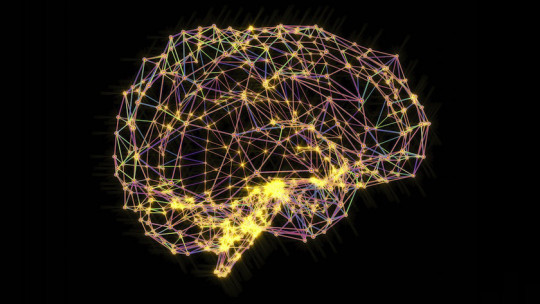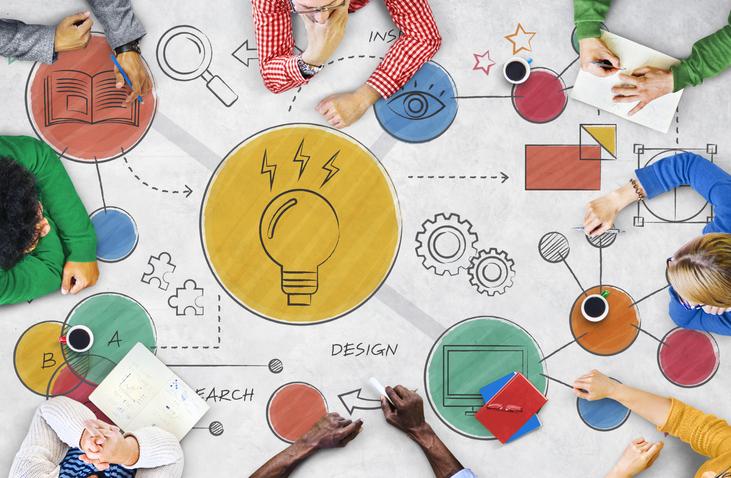
We see, hear, smell, touch…in short, we perceive the stimuli that surround us. We process this information and based on these perceptions we form an idea of what is happening around us and subsequently act accordingly. Maybe for most people what we perceive is what actually happens but not everyone perceives or processes the same thing and in the same way.
Each one has a specific cognitive style that makes us see reality in a particular way and focus more or less on certain aspects.
Cognitive styles: the concept
The concept of cognitive styles refers to the set of different ways of perceiving, processing, storing and using information available in the middle. It is a set of mainly cognitive skills that are influenced by different aspects and that govern the way we perceive what surrounds us, which in turn influences the way we act.
Strictly speaking, cognitive style is the way our mind acts regardless of the content this. The style in question will depend on the personality of the individual, the abilities they have focused on and the learning they have done throughout their life.
Cognitive styles, as the term indicates, are determined by a set of predominantly cognitive parameters. However, also are influenced by the emotional sphere and the integration of values and motivations In fact, they are conceptualized as the reflection of the relationship between cognition and affect and constitute one of the main elements that allow the formation of personality and the existence of individual differences. In part they are acquired throughout life, but there are biological influences that predispose towards one style or another.
Main cognitive style typologies
In general, the main types of cognitive style have been classified into bipolar continuums that account for a concrete way of observing reality
It is not necessarily one thing or the other, but our style can be somewhere in between. Below are some of the main styles considered by various authors, with the first three being the most relevant and analyzed.
1. Dependence vs. Field Independence
This factor refers to the ability to abstract what is being analyzed or captured from the context in which it appears.
The field dependent usually has a global view of the situation and can be influenced by this, while the field independents They usually carry out a more independent analysis focused on the object to which they pay attention but without equally valuing the context in which it appears. While the first has an external frame of reference focused on the situation, the second starts from a frame of reference focused on themselves.
On the other hand, the field dependent person usually has more interference in memory, although he or she tends to detect more salient elements when forming concepts, being more suggestible and visual, more sociable and less emotionally controlled. On the other hand, the independent is usually more verbal, grasps the boundaries between things and people more, is more organized and less influenced.
Generally there is a tendency to that field independence increases up to 25 years, moment when it stabilizes. Independence makes it less likely to be influenced by contextual variables, but this can be counterproductive since all the variables that affect reality are not taken into account. In this way, both the dependent and the independent have advantages and disadvantages in different aspects.
2. Reflexivity vs Impulsiveness
On this occasion, mention is made of the speed of reaction to stimuli The impulsive person will respond quickly and actively, although with a greater possibility of making mistakes. On the other hand, the reflective person takes their time to analyze and evaluate the situation, which, although it allows them greater precision and effectiveness, makes them slower and more inactive.
It is not only about speed but also about the way of facing reality. The reflective person usually evaluates more options and carry out more checks beforehand, while the impulsive one is more global. The reflective person is usually calmer and more self-controlled although more indecisive, while the impulsive person is usually more anxious, sensitive and distrustful.
3. Sensory vs Intuitive
On this occasion, the cognitive style used can vary between the use of data available through the senses and the use of imagination and intuition to capture relationships beyond what is perceptible. Sensory is based on already existing information while the intuitive tends to have a mentality that is a little more focused on spontaneous elaboration and going beyond what the data provides.
4. Verbal vs Visual vs Haptic
On this occasion the divergence is found in the way in which the person best captures the information, whether through iconic or auditory means. There is also the haptic, which better captures reality through touch. The latter It is usually linked to infants and the elderly while the first two are more typical of young people and adults.
5. Global vs Analytical / Holistic vs Serial
Similar to field dependence and independence, but this time focused on the object or situation itself instead of on the context. The global style focuses on identifying the object in its entirety as a single unit and undertakes its analysis as such. Everything is processed in block. However, the analytical style subdivides the whole into different details from which begins to process information without needing to know all of it of the data.
6. Convergent vs Divergent
Linked in part to creativity, while the convergent style focuses on seeking a specific solution from the convergence of available information, the divergent try to propose different alternatives between which it can be difficult to choose.
7. Leveler vs Sharpener
The cognitive styles of this dimension refer to the capacity or degree to which subjects are able to see similarities and differences between stimuli. While the leveler tends to ignore or underevaluate differences between elements To simplify and this allows them to generalize more easily, sharpeners tend to retain differences and highlight them, distinguishing different elements more clearly.
8. Tolerant vs Intolerant
This dimension refers to the capacity of each person to have flexibility and mental openness towards the possibility of the existence of elements that diverge from what is expected and established by the norm or one’s own observation. The tolerant accepts the possibility that other alternatives exist and is capable of modifying their cognitive structures to encompass them, while the intolerant does not do such a thing.
Importance of cognitive styles
Cognitive styles are an important element of our person that can help us better understand how each person processes information from the environment or from within. Beyond the descriptive this may have implications in various areas such as education or clinical practice
For example, a child with primarily visual processing will find it more complex to capture verbal information and will remember knowledge better if graphics or stimuli focused on vision are applied. This is what happens with many children with different disorders, such as in many cases of autism spectrum disorder or in many speech disorders, in which the use of pictograms and more visual information facilitate the understanding and acquisition of skills and knowledge.
At a clinical level it is also of great relevance if we take into account that cognitive style makes it easier to interpret reality in a certain way. For example, it has been identified that field-dependent patients tend to be more prone to pathologies such as depression, while field-independent patients they do it towards psychotic disorders In the same way, the impulsive person tends to stress, or the reflective person can approach obsessive disorders.
Taking cognitive styles into account can be of great help to establish individualized plans in a variety of areas, allowing a substantial improvement in the capabilities and well-being of each person by adjusting expectations and the help offered to them to advance.








